Top 5 Week 1# Weirdest Insects Around the World.
Today, I'll be doing something different, not entirely different though. I already made a post like this a month ago. The first one was on insects with superpowers which included insects like the bombardier beetle, locust, bees, dragonfly, cockroach and many more. You might wish to see them, so here they are[Part1] and [Part2]. So, there are 10 of them but I plan to talk about five so there won't be a part 2 this time. So, let's check out the weirdos on my ranking list - not really my list though, I just edited the one I found.
Weirdo 1: The Hercules Beetle
The Hercules Beetle Scientific Classification
Kingdom: Animalia Phylum: Arthropoda Class: Insecta Order: Coleoptera Family: Scarabaeidae Subfamily: Dynastinae Genus: Dynastes Species: D. hercules
What an insect! A perfect description of something "weird". I don't think anyone needs an explanation as to what weird means after seeing this picture. Is this a plier or something...? Lol.
[1] The Hercules beetle is scientifically known as Dynastes hercules. D. hercules is a member of the rhinoceros beetle endemic in the rainforests of the Central and Southern parts of America. Currently, they are one of the largest flying insects we have in the world.
[2] The specialty of this insect is the longhorn possessed by the male ones and it's a pity the females don't have. The longhorn is what makes the male ones long even up to about 18cm which makes them the longest beetle in the world.
The male D. hercules are usually black in color except for their elytra which are olive green but still have black spots all over. But unlike the male, the females have punctured and entirely black elytra. Two things make the Hercules beetle popularly known. [1] Their longhorns. [2] Their strength: They can carry heavy weights even something that is up to 850 times heavier than their whole body mass but I don't think a lot of people know that the male can change the color of their elytra from black to yellow and back in a short time.
My last look at the picture of the hercules beetle made it look like a crocodile to me. Does it also look like that to you??
Weirdo 2: The Australian Walking Stick
The Australian Walking Stick Scientific Classification
Kingdom: Animalia Phylum: Arthropoda Class: Insecta Order: Phasmatodea Family: Phasmatidae Subfamily: Extatosomatinae Genus: Extatosoma Species: E. tiaratum
[4] The Extatosoma tiaratum has a lot of names like "the giant prickly stick insect, the spiny leaf insect, the Macleay's specter, and the Australian walking stick." I don't know why, but I like the last name - the Australian stick insect. The last name is because of its presence in Australia, I mean it's like a citizen there already, lol.
[5] These insects just like most other ones have male and female of which the female is bigger than the male. The female grows well up to about 20cm, they grow spikes for defense all over their body, they have rounded body, and they have tiny wings that can't even help them fly, unlike the male ones. The male ones grow only up to 11cm at most, they only grow a few spikes and that's around their face alone, they have a thinner body but large wings with which they can fly.
So, from the description I just gave, I believe you know the one you see here is the female - small wings ( I didn't even see it), a rounded body and big body ( not small and thin).
[6] Generally, the insect E. tiaratum strikes a scorpion pose when it is in danger or feels threatened. I believe we know all or most of all these insects have a defense mechanism. The E. tiaratum is not good to touch as their spines can pierce through a human skin and the fully grown ones "can release a defensive odor" that smells like toffee and of course, the male find a use for their wings yet again, they can flash their wings to shun predators.
Weirdo 3: The Titan Beetle
The Titan Beetle Scientific Classification
Kingdom: Animalia Phylum: Arthropoda Class: Insecta Order: Coleoptera Family: Cerambycidae Subfamily: Prioninae Genus: Titanus Species: T. giganteus
[7] The Titan Beetle is scientifically known as Titanus giganteus (T. giganteus). It is mostly found in the rainforests of Venezuela and Columbia. The insect is arguably the largest insect in the world as some people claim the goliath beetle, the hercules beetle and some other beetles are larger than the titan. The Titan Beetle is the largest and I wouldn't want some people trying to fight that. The titan beetle, 6.6 inches, is the largest because the goliath beetle is just about 5 inches - that's just enough to show the difference and don't tell me the goliath beetle is fatter, lol. Of course, the hercules beetle occasionally grows up to 6.9 inches but most of the length is gotten from their longhorn and not their body.
[8] The titan beetle has a very long body, "short curved and sharp mandibles" that can break a pencil into two and even cut human flesh. It is still a surprise to me that the adult titan beetle does not eat, they search for mates instead. They are not aggressive and they are very gentle but once in a while they hiss and bite and that's only if they are threatened. I'm sure you wouldn't want a bite from a strong jaw capable of breaking a pencil into two.
According to Wikipedia, the larvae of the titan beetle has never been found but there's an assumption that they feed on decaying woods and maybe they take several years to grow.
Intentionally, I used the picture above to show how big the beetle is. I had to remove the picture I put initially, it was a diminished photo and the size was smaller than the way it should be. You can see the beetle is bigger than the boy's hand. We don't find too many beetles that big. Funnily enough, the beetle is only a little bit smaller than the average hand of a female adult which is 6.77 - 0.17 inches smaller.
Here's a video for you
Weirdo 4: The Giant Water Bug
The Giant Water Bug Scientific Classification
Kingdom: Animalia Phylum: Arthropoda Class: Insecta Order: Hemiptera Family: Belostomatidae Subfamily: Belostomatinae Genus: Lethocerus Species: L. deyrollei
[9] The giant water bug is one of the largest insects too. It's just about 4 inches long, know it wouldn't be a surprise to you. Of course, not after you've seen the titan beetle.
[10] The giant water bug is scientifically known as Lethocerus deyrollei. The insects are freshwater insect having several names based on their location. The Indians called them toe-biters while the Floridians call them alligator fleas. They are well distributed and can be found in freshwater habitats anywhere in the world.
[10] The giant water bug is very aggressive, unlike the titan beetle. The bugs are usually in the water, they stick to the bottom of a water body motionlessly waiting for the next hapless prey to come by. Once the prey gets close enough, they launch and inject it with their saliva. The largest ones can even feed on water snakes.
[11] One weird thing about this insect is the fact that the males are the ones to carry the eggs and they carry them on their wings until they hatch. During this period of time, they cannot mate and the females have to look for males to mate with.
[11] Most importantly, the giant water bugs are really smart. The adults can't really breathe under the water so after a while they swim to the surface to take in some air. The smartness is seen when they sight a bigger predator, they act dead, lol. They form as if they are already dead and you don't need to kill them anymore. They just lay motionlessly and release a fluid through their anus which makes you feel they are dead but don't dare take your eyes off. Once you do, they come alive and their bite is really really painful.
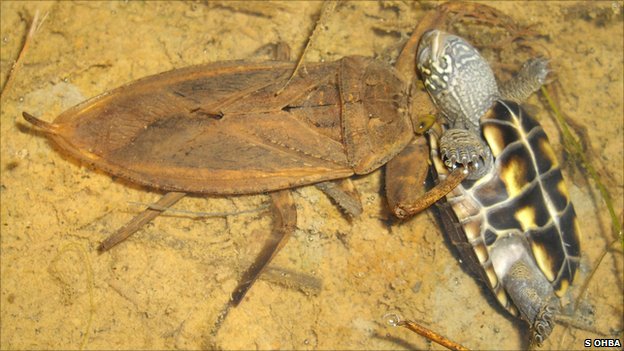
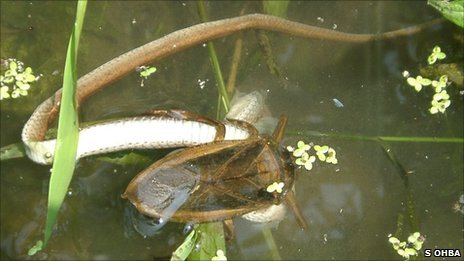
I got these images for you from BBC in case it happens that you didn't check the references. The bug feeding on a small turtle and a water snake respectively.
Weirdo 5: The Hummingbird Moth
The Hummingbird Moth Scientific Classification
Kingdom: Animalia Phylum: Euarthropoda Class: Insecta Order: Lepidoptera Family: Sphingidae Subfamily: Sphinginae Genus: Macroglossum Species: M. stellatarum
[12] The hummingbird moth is scientifically called Macroglossum stellaratum. The hummingbird is well distributed and so it is not particular to only a country or region. You can find it in Portugal, Japan, and even in North Africa.
[13] Definitely got its name from the hummingbird. The moth looks so much like the hummingbird, makes sounds like a hummingbird, has a long tongue like the hummingbird, even the tail, wings, and movements are similar. Usually, the wings of the moth have two colors - that is brown and orange. [14] The brown color is the forewing while the orange is the hindwing. The hummingbird moth and the hummingbird are not related in any way except for the fact that they both belong to the animal kingdom. This resemblance is known as convergent evolution
The hummingbird moth flies anytime it wants and even in the rain. Now, that's weird, insects or birds don't fly in the rain.
The wing of an adult is about 1.6 - 1.8 inches. [15] Well, let me tell you that if you are in a region that the hummingbird moth is present and you want to see one, just go to the nearest parks, gardens where there are enough food plants, you'll find them.
Thank you for coming around!!
That little boy, @pearlumie.
I think I just started a series, the top 5. I hope to make it a weekly one so let's see how it goes...

Proud Member of @steemstem
Join us on the channel in steemit.chat and rub minds with other science geeks.
Proud Member of @genesis-project
You want to join genesis-project, contact @ehiboss, @samminator, @ememovic, or @camzy, and please ignore the scammers, you don't have to pay to join @genesis-project.
Proud Member of @air-clinic
Join air-clinic's discord server. Medical practitioners needed. Anybody from any field is free to join, we do daily lectures and consultation services are available.
Contact @nairadaddy for more info.
Image Sources
References
[8] The larvae feed on decaying woods
[9] The Length of a giant water bug
[10] "BBC Nature - Giant water bug photographed devouring baby turtle". BBC Nature.
[11] The smartness of the giant water bug
[12] The Scientific Name of the Humming Bird
[13] The similarities between the hummingbird and the hummingbird moth
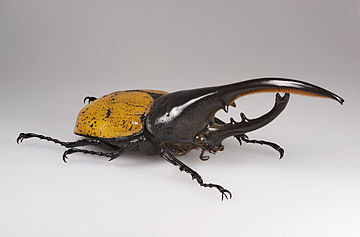
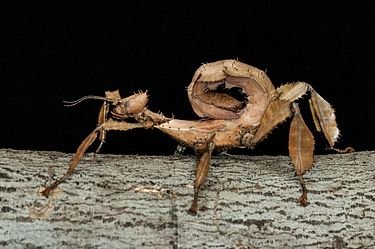

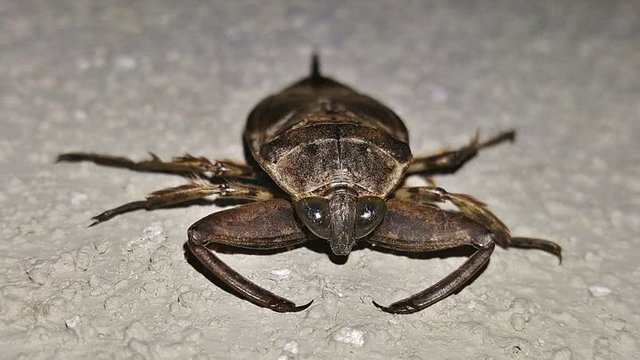
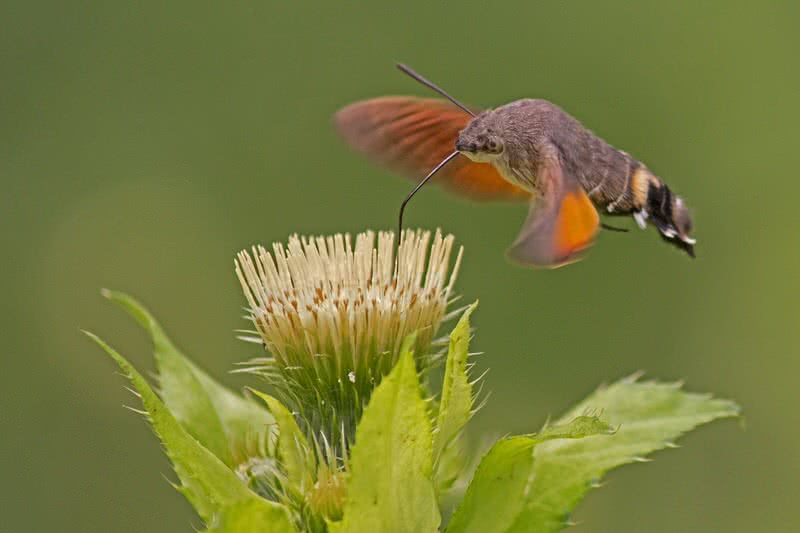
There is nothing as scary as the sight of these insects. I fear insects a lot. Nice information on these insect. For you I will not even think of studying to know about them. Thank you.
Thank you, mummy
Weird insects indeed! If an insect could break a pencil into two then it's deadly...Wow information, thank you.
Thank you steemstem...
Long Life
Hummm. Interesting, those insects are definatly weird.
Titan beetle breaking a pencil into two, jess that scary and weird enough.
And even the gaint water bug, looking like it gonna fly out of my phone😵 pretending to dead, and attacking afterwards. I hate pretence please.
Smiles, and the humming moth is cute anyway
Lol.. Thanks for visiting
No offence, but yuck! I hate bugs. Love your article though 👍
Lol... It's ok to hate them. I don't like them too
Amen to that! 🙌
reading this post gives me the creeps lol
I can relate to these, thanks to that boring course "entomology" I did in uni. It wasn't a waste afterall
Thank you for coming
Omg one of the strangest insects in the world. Its gives you the chills.
Thank you..
This is educative, thanks for sharing